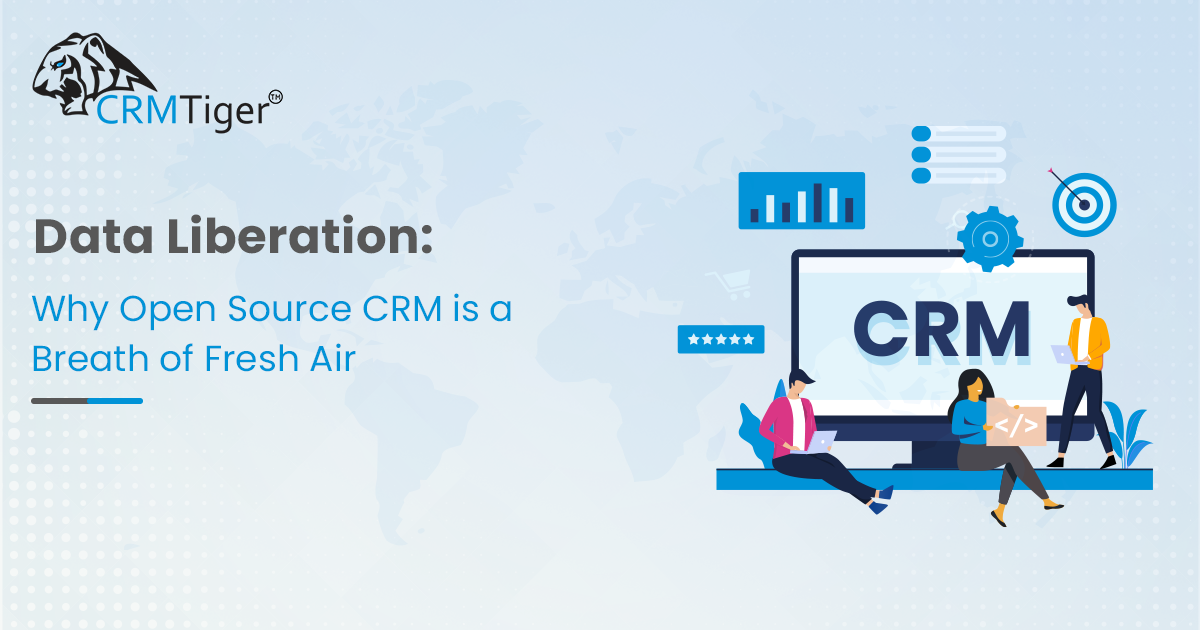
These days, most companies are trying to figure out optimal usage of their data to facilitate better decision making, enhanced customer interaction and maintaining an edge over the competitors. As much as investment in Customer Relationship Management (CRM) systems is necessary, many of the organizations that do are chained to the majority of commercial solutions that are not only expensive and limiting, but come with vendor lock-in as well. Enter open source CRM – a one-size-fits-all looses up that factors in not only the aspects of control and flexibility, but a complete unshackling of data.
The Problem with Commercial CRM Systems
Through experience, it has been established that commercial CRM solutions can often be construed as a double edged sword. They have, on the one hand, freemian features and undependent support, but on the other, they tend to cause several problems:
- Vendor Lock-in: Companies are forced to rely o a single vendor providing all the software updates, support and even customizations which in turn freeze development and escalate costs.
- Cost: The cost of obtaining a license, implementation and the continuous charge for subscription more often than not add up everywhere which becomes a struggle for medium and small-sized enterprises (SMEs).
- Limited Customization: Modifying proprietary solutions in order to meet certain business requirements can be quite difficult, often wasting talented developer effort or simply being out of reach.
- Data Accessibility: Many proprietary CRMs do not allow users to export data which creates a greater barrier for these businesses to change systems or make use of their extracted data.
What is Open Source CRM?
Open source CRM solutions are computer programs that do not restrict the organization in using, altering or distributing the obtained software. This openness creates new avenues for collaboration among developers and businesses who can create and adapt the software in ways that best suit their requirements. Premium open source CRM solutions like SuiteCRM, Odoo, EspoCRM have great features which are comparable to the proprietary systems but unlike them, the users have a custom free reign.
The Advantages of Open Source CRM
- Data Freedom:Perhaps the greatest reason behind the need to use open source CRM is the importance of data freedom. Organizations own their data and have the ability to access and relocate it whenever they please. This takes the worry away that one will be within the controls of one vendor’s system allowing for changes or improvements where necessary.
- Cost-Effectiveness:Open source CRMs are generally free except for costs of hosting, support or custom development, which is normally the case for many Organizations. This may reduce the total costs regardless of the kind of CRM system used, therefore allowing many organizations to use their funds for other important projects.
- Customization and Flexibility:With access to the source code, businesses can customize their CRM to suit specific processes, workflows, and integrations. This flexibility ensures that the CRM evolves alongside the organization, rather than forcing the organization to adapt to the software.
- Community Support and Collaboration:Open source projects usually come with vibrant communities that contribute to ongoing development and support. This collaborative environment fosters innovation, with users often sharing plugins, extensions, and best practices that enhance the CRM’s capabilities.
- Enhanced Security and Transparency:While proprietary solutions often operate as black boxes, open source CRMs allow businesses to inspect the code for vulnerabilities. This transparency can lead to better security practices, as organizations can patch issues quickly and efficiently without waiting for a vendor’s response.
The Road Ahead: Embracing Open Source CRM
Moving away from proprietary CRM may sound daunting to many, but the merits of using an open source CRM system are more than the pain points. So here are a few things that have to be done when changing over:
- Assess Your Needs: Identify which features and functionality are must haves in your business, and look for open source solutions that can address those needs.
- Involve Your Team: Let your team be part of the choice. This will ensure that the chosen CRM can be used by other departments that may not have been considered.
- Plan for Implementation: This is where the major focus has to be done. Budget for retraining, restoring and any other activities to be performed after the installation in order to ensure that the change is easy to adapt to.
- Leverage Community Resources: This is the best part of an open source solution. Forums and other non-traditional means can still help you.
- Iterate and Improve: The nature of the open source industry is change. Keep updating your system to the latest versions and upgrades available to ensure maximum utilization.
Conclusion
Dismantling walls and cages by turning to open source CRM means a new epoch of relation management comes to the desk of many organizational leaders. Information is no longer treated as a hostage typical for proprietary systems, organizations can be flexible, save money and own all of their information. As more businesses recognize the value of open source solutions, the CRM landscape will likely continue to evolve, ushering in a new era of innovation and collaboration. Embrace the freedom of open source CRM and discover how it can transform your organization into a more agile, customer-centric powerhouse!
If you have any questions or tips regarding the use of the Date & Time field in vTiger, feel free to express them in the comments below!
Hope you found this blog useful.
We would be happy to assist you.
Please contact us on info@crmtiger.com if you needed further help from us.
Let us know if you need more information on this


Leave a Reply